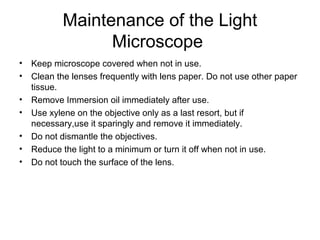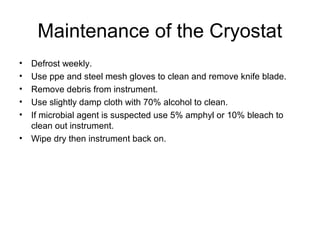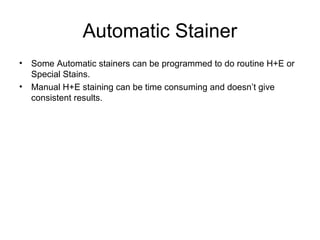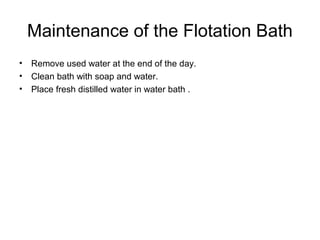This document provides an overview of various instruments and equipment used in a histology laboratory, including light microscopes, polarizing microscopes, fluorescence microscopes, electron microscopes, microtomes, tissue processors, stains, and cover slippers. It describes the basic functions and proper maintenance of each tool to ensure quality samples and results.




















